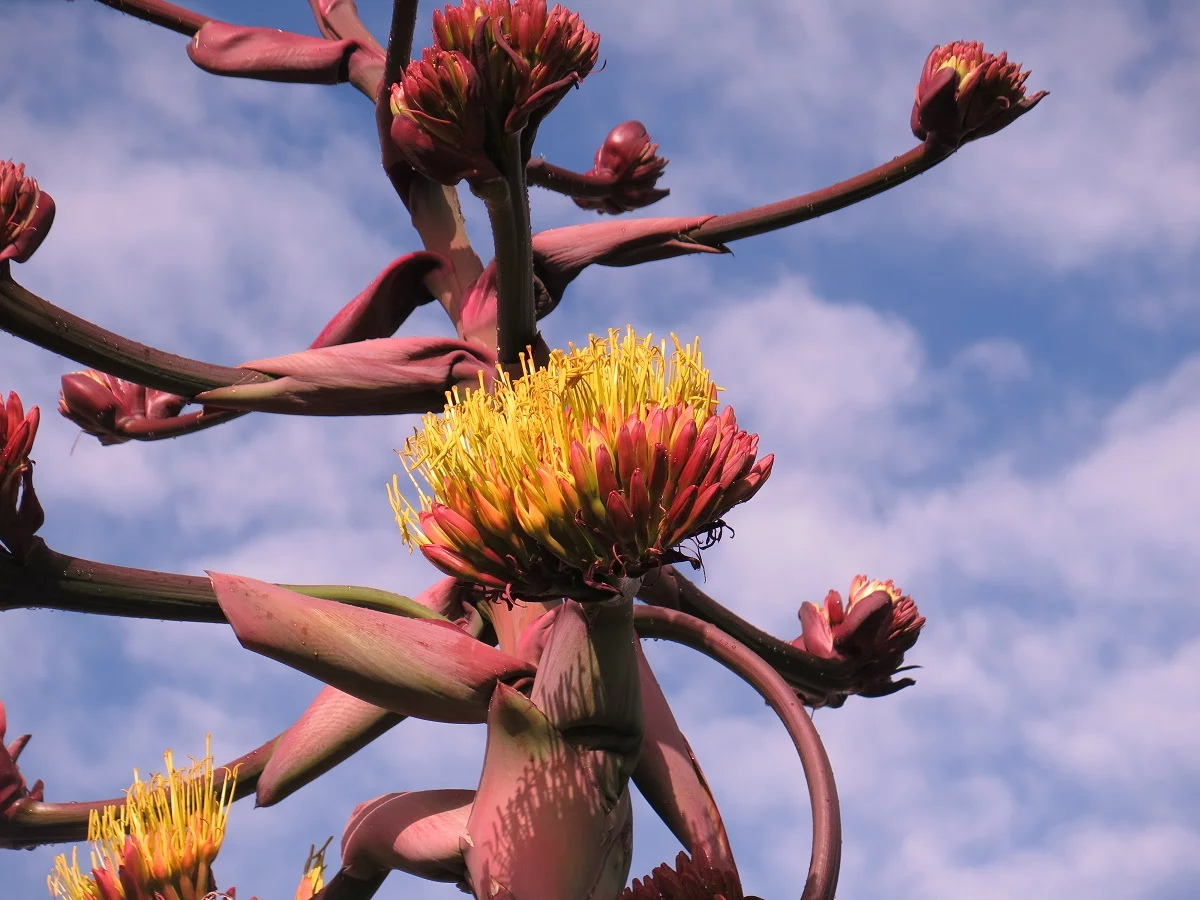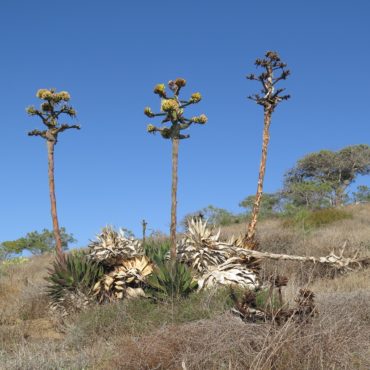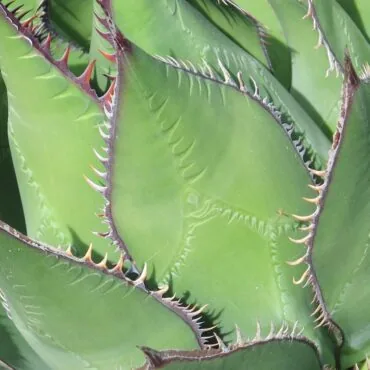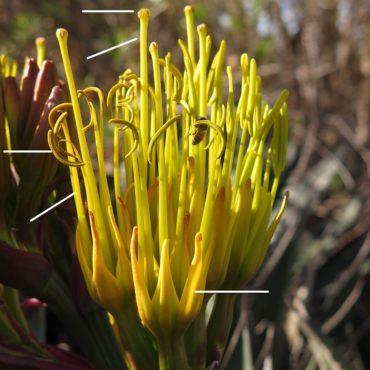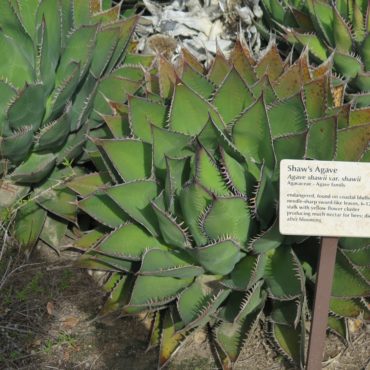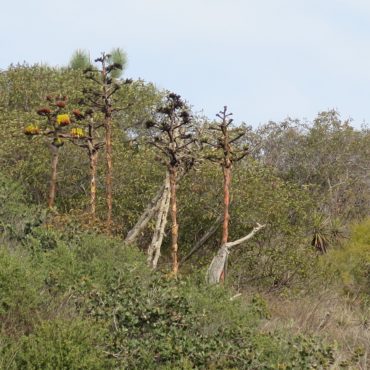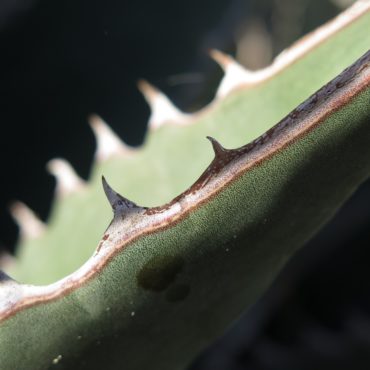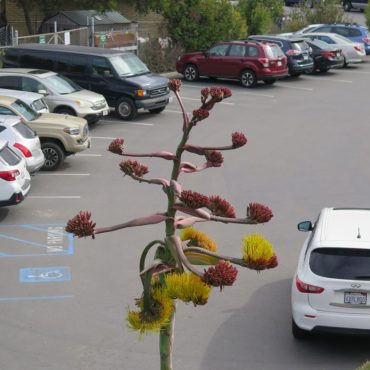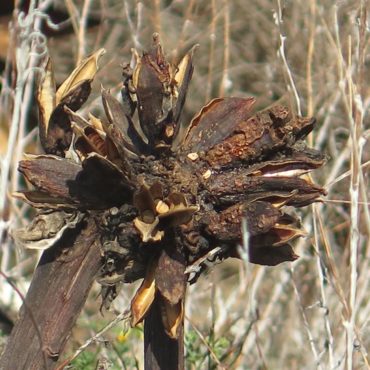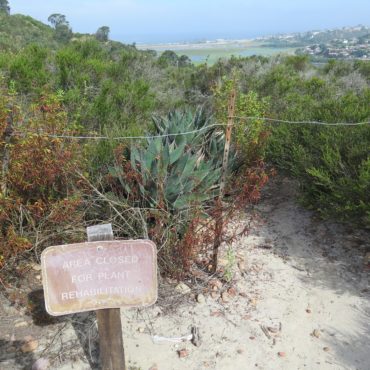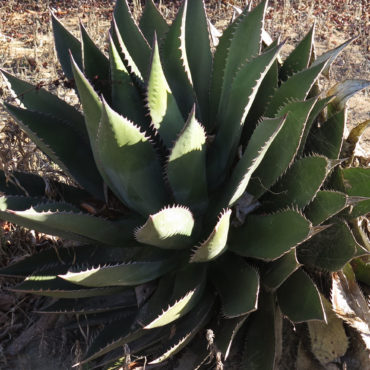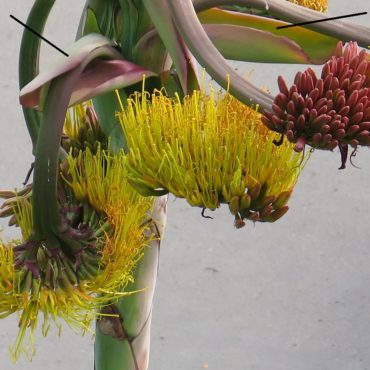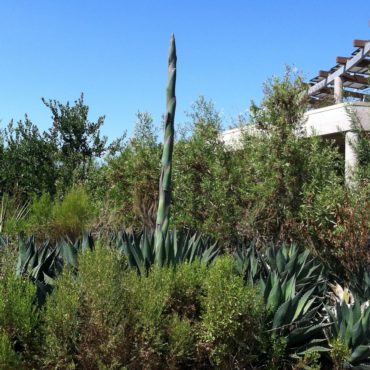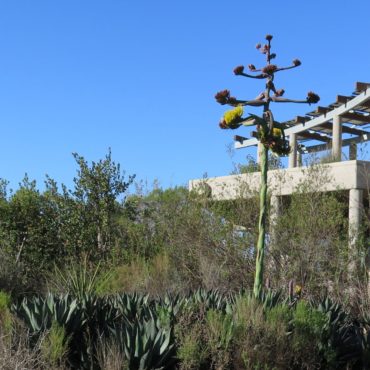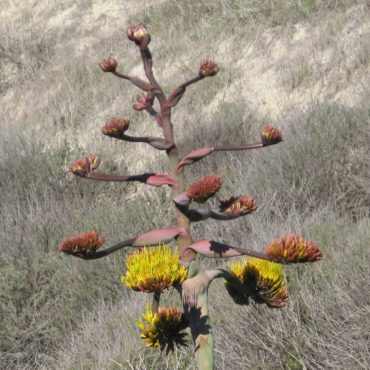Among the important management concerns for an endangered species is the rate of production of seeds and seedlings, and the proportion of those resulting from cross-pollination, a mechanism that facilitates population variability, change and ultimately population survival. Shaw’s agave readily reproduces asexually by cloning, but both the production of viable seeds and the production of seedlings are depressed below the rates seen in natural populations further south.
As of 2014 519, we did not know the extent to which Shaw’s agave was self-compatible (able to fertilize itself), or whether successful fertilization was restricted by the low numbers of individuals, and the low fraction of plants blooming at any one time. Nor did we know what organisms pollinated Shaw’s agave, or whether seedling germination and growth were limited by lack of open ground, by predation of the seeds or by grazing on the tender young plants.
In the intervening years, scientists from both the United States and Mexico have begun to work on the reproduction problem 519,520, 539. Unfortunately, like many of our attempts impose ordered observations and experiments on the natural world, many of the results have been inconclusive and inconsistent.
Germination and growth of viable seeds have been estimated by growing some seeds and/or seedlings within wire cages to exclude herbivores. In general, more seedlings survive inside cages. Thus, some of the recruitment mystery may be explained by hungry herbivores.
The search for missing pollinators continues. Several characteristics of the agave flower suggest chiropterophily (pollination by bats): the flowers are tubular and yellow (or white) in color, and held upright in separate clusters with lots of air space around them. At the southern end of Shaw’s agave’s natural range, bat pollination seems to be common, but few pollinating bats have been observed visiting our northern plants. Instead, north of the border, several diurnal visitors are common, including bees, hawk moths and humming birds, but no active transfer of pollen has yet been observed.
Of the documented flower-visitors, Hooded Orioles are the most likely to be effective pollinators. Unfortunately, these birds are summer residents and are rare or absent from the county between October and March 40, leaving only a narrow band of overlap with the blooming agave.
In 2022, we appear to be little further toward understanding the poor recruitment of natural and naturalized populations of Shaw’s agave north of the border. More studies may help, but it is possible that persistence of Shaw’s agave north of the border will require active management.

